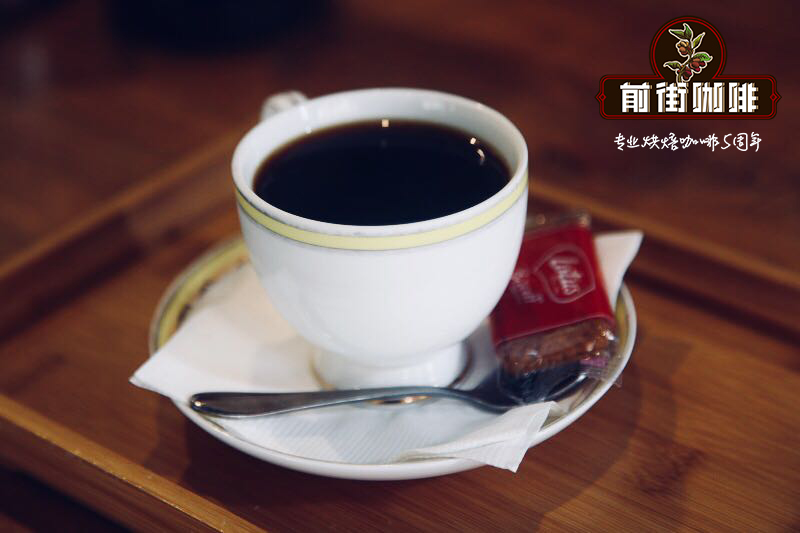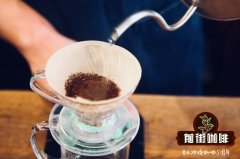Brazil CamoShim Manor Jacu Bird shit Coffee how to make Bird poop Coffee by hand

Professional coffee knowledge exchange More coffee bean information Please pay attention to coffee workshop (Weixin Official Accounts cafe_style)
Jacu Bird Coffee
The coffee comes from Brazil and is extracted from the digestive products of a bird called Jacu. It is said that this coffee is more expensive than cat poop coffee and tastes thick and sweet. Well, by that logic, some coffee shit is still going to happen.
Jacu is a bird that lives in South America. They like to eat coffee fruits very much. The coffee beans produced by coffee fruits after passing through their digestive system are of high quality. However, it was difficult to find bird droppings, and at the same time, there were undigested coffee fruits in the droppings.
Therefore, the production of bird feces coffee was even less than cat feces coffee. It was said that the price of a small packet reached more than 10,000 yuan, and only a few cups could be brewed. Unlike cat poop coffee, this coffee does not seem to have been farmed yet.
Many people have heard of cat poop coffee and think it is the most expensive coffee, but it is not. Cat poop coffee is produced in many parts of Southeast Asia (including Yunnan in China). An even rarer type of animal-stomach fermented coffee is "birdshit coffee," which is currently produced only on Camocim Estate farms in Brazil.
History: In the 1960s and 1970s, when Brazil's Camocim farm was still under the old Sr. When Olivar Fontenelle de Araújo was under his name, he came up with various ways to protect the forest of the farm, such as introducing exotic trees such as Pinus Elliottii and Eucalyptus, planting orchid plants of Lagerstroemia family, building small reservoirs, etc., thus starting Camocim's transformation into a modern organic and biodynamic farm.
In the 1980s and 1990s, these efforts began to bear fruit, improving the ecological environment of farms and greatly increasing wildlife.
In 1999, in order to inherit the pioneering spirit of his 92-year-old grandfather, farmer Sr. Henrique Sloper Araújo decided to introduce organic coffee growing methods and grow coffee on slopes more suitable for coffee.
Camocim Farm has approximately 123.5 acres (50 hectares) under coffee cultivation, and although some slash pine trees have been felled, the biodiversity of the farm has been preserved. Initially coffee was grown mainly in forest clearings and shady woodlands. Today coffee is grown only on terrace slopes with natural vegetation. The farm regularly prunes coffee trees and leaves and twigs are returned to the field as compost to improve soil organic matter.
Today, this organic method of cultivation, which balances natural forests and vegetation, has become a model for Brazil's future eco-friendly coffee production.
Jacu Bird Coffee
Camocim Farm, Pedra Azul in Espirito Santo, Brazil, is famous for its South American bird called the Jacu. This bird lives in shady coffee groves and eats ripe coffee berries, which is the natural selection process for producing high-quality coffee.
Farmer Henrique Sloper does not see the birds, which eat ripe coffee berries, as pests, but as natural additions to the farm flora and fauna, so Camocim welcomes them Jacu Bird, who sees them as part of the farm's agricultural ecosystem, uses them as the most effective coffee picking "workers". Once the birds eat the ripe coffee and defecate under the coffee tree, the farm workers collect the odor-free bird droppings, send them to special drying sites to dry, clean them to the shell (Parchment) beans, and then store them for about three months. Jacu Bird coffee has a pleasant, soft taste, with a hint of nutty sweetness and dryness, lingering molasses, moist notes of black bread, and a hint of black pepper.
Jacu Bird is sweet, thick and slightly tart than traditional Brazilian coffee grown at Camocim Farm. This is undoubtedly the rarest coffee in the world.
The main message of Jacu Bird Coffee
Camocim Estate (Jacu Bird Coffee)
Farm founder:Olivar Fontenelle de Araújo
Current owner:Henrique Sloper
Large region: Spirito Santo
Small region:Pedra Azul
Altitude: 400-500 m above sea level
Annual rainfall:1500-2000 mm
Coffee varieties: Bourbon, Icatu, Catuai
Processing method: Bird-processed
Drying method: sun drying on a sun bed
flowering period: August-December
Harvest period: May-September
Camocim Estate has been certified as an organic farm by Instituto Biodinamico do Brazil.
Front Street Brewing Parameter Recommendations:
How to make Brazilian coffee?
Front Street Coffee Hand Brewing Reference: Weigh 15g of [CamoShim Manor Jacu Bird Poop Coffee] coffee powder, pour it into the grinder and grind it moderately. The ground particles are slightly coarser than salt. We use BG grinder scale 6A (standard sieve pass rate 50%), water temperature 88 degrees, kono/kalita filter cup extraction, recommended powder water ratio 1:14.
The hot water in the hand-made pot draws a circle clockwise with the center of the filter cup as the center. The timing starts when brewing. The coffee is brewed to 30g in 15 seconds. Then stop filling water. When the time reaches 1 minute, fill water for the second time. When injecting water for the second time, as before, draw a circle clockwise around the center of the filter cup, and the water flow should not rush to the place where the coffee powder is connected with the filter paper, so as to avoid channel effect.
Coffee powder to the outermost circle to leave a circle, and then a circle to the middle brewing, 2 minutes and 10 seconds, coffee to 210g, brewing coffee is complete.
| Japanese Ice Hand Chong [CamoShim Manor Jacu Bird Shit Coffee]
Front Street Coffee Ice Hand Chong [CamoShim Manor Jacu Bird Shit Coffee] Reference:
Brazilian coffee [CamoShim Manor Jacu Bird shit coffee], medium dark roast, BG grinder scale 5R (standard sieve pass rate 60%)
20 grams of powder, 150 grams of ice, 150 grams of hot water. The water temperature is 88℃ higher than that recommended for normal hand flushing, 1℃ higher than that recommended for normal hand flushing. The normal grinding of small Fuji is 3.5 scales, and the ice hand flushing is slightly finer by half a grid-small Fuji is 3 scales. The recommended powder (water + ice) ratio is 1:15.
Steaming water 40 grams, steaming time 30 seconds.
Water injection in stages, 60 grams of water in the first stage and 40 grams of water in the second stage. Use a relatively fine but high water injection column, stir the impact vigorously, so that the coffee powder fully tumbling, but be careful that the liquid level is not too high, do not rush to the edge of the filter paper.
The whole extraction time is also about 2 minutes and a half (with the normal extraction time of 20 grams of powder close).
END
Important Notice :
前街咖啡 FrontStreet Coffee has moved to new addredd:
FrontStreet Coffee Address: 315,Donghua East Road,GuangZhou
Tel:020 38364473
- Prev

Brazilian Bauer Vista Manor how to grind coffee by hand how to choose filter cup for Brazilian coffee
Professional coffee knowledge exchange more coffee bean information please follow the coffee workshop (Wechat official account cafe_style) after 2000 because the C.O.E international coffee cup test was held, high prices give coffee farmers an incentive to strive to produce high-quality Brazilian coffee. Coffee beans produced at higher elevations in the south have been well appreciated, mainly by the farms around the Minas platform.
- Next

Brazilian Camo Manor Honey treatment of Ice hand Coffee Water Ice how to calculate _ Brazilian Coffee should be brewed like this
Professional coffee knowledge exchange more coffee bean information please follow Coffee Workshop (Wechat official account cafe_style) SUL DE MINAS history, this area is the birthplace of Brazil's large number of coffee production, there are many generations of small farmers here. Perhaps for this reason, there are more cooperatives in the region. Although it is mostly small farms, it is still a good industrialized area.
Related
- Detailed explanation of Jadeite planting Land in Panamanian Jadeite Manor introduction to the grading system of Jadeite competitive bidding, Red bid, Green bid and Rose Summer
- Story of Coffee planting in Brenka region of Costa Rica Stonehenge Manor anaerobic heavy honey treatment of flavor mouth
- What's on the barrel of Blue Mountain Coffee beans?
- Can American coffee also pull flowers? How to use hot American style to pull out a good-looking pattern?
- Can you make a cold extract with coffee beans? What is the right proportion for cold-extracted coffee formula?
- Indonesian PWN Gold Mandrine Coffee Origin Features Flavor How to Chong? Mandolin coffee is American.
- A brief introduction to the flavor characteristics of Brazilian yellow bourbon coffee beans
- What is the effect of different water quality on the flavor of cold-extracted coffee? What kind of water is best for brewing coffee?
- Why do you think of Rose Summer whenever you mention Panamanian coffee?
- Introduction to the characteristics of authentic blue mountain coffee bean producing areas? What is the CIB Coffee Authority in Jamaica?

